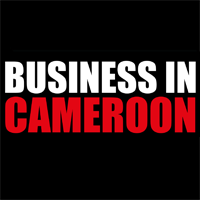
CEMAC: investing for growth
(Business in Cameroon) - The investment rate of the area has increased by 10% compared to last year thanks to oil and an improved business environment.
By Hance Guèye, Dakar
Despite the strong aftershocks in the financial scandal of its Central Bank, the Economic and Monetary Community of Central Africa (CEMAC) tries to continue its activities. Thus the monetary policy committee met on 6th November, under the chairmanship of its Speaker, in this case the Vice-Governor Rigobert Roger Andely. Good news in a heavy atmosphere due to the governor Philippe Andzembé' imminent departure, despite his gallant last stand. The delay allowed by the pretext that he was appointed during the Conference of Heads of State and not by his own country, will end with the next summit convened in November.
Reversed trend
The investment rate in the currency area saw an increase of 10% in 2008, up from 38% in 2009 as opposed to 29% last year, said committee.
CEMAC area is back on investment trend. In the '80s and '90s, she accused a rather worrying disinvestment. The flow of FDI (foreign direct investment) had become negative. The trend has begun to reverse timidly until 2000. Cameroon, for example, after registering a decline of 16 million dollars between 1985 and 1991, earned $ 83.1 million in 2002. As for the Central Africa, it increased from 10 million dollars in 1993 to 4.3 million in 2002. The most spectacular is in this context, Chad, thanks to oil. According to UNCTAD figures, in 1992 its investments had retracted to 2.3 million. In 2002, 900.7 million dollars have entered the country.
Significant progress
To reverse the trend, the region should improve its communications infrastructure, business climate and its good governance, as Joseph Djaowe stated in an article published in the Journal of African Integration (Revue africaine de l'Intégration ) in past January. The report then noted significant progress in the areas considered most susceptible to the IDE. Thus, the creation of the Banking Commission of Central Africa has the sanitation sector. At the same time, macro-economic indicators in the region (growth, fiscal consolidation) have evolved positively, as the privatization of several public companies (National Power Company, Board of Railway Cameroon, to name only the largest economy in the region), excluding oil exploitation. This combination underlines the strong points of investment.
The most spectacular is in this context, Chad, thanks to oil. According to UNCTAD figures, in 1992 its investments had retracted to 2.3 million. In 2002, 900.7 million dollars have entered the country.
Perhaps this explains why the growth rate is ultimately less affected than expected by the crisis. It was 2.4%, compared to a forecast of 2.1%. It acknowledges, however, a marked decline compared to 2008, 4.1%. The renewed investment and growth has not led to a surge in inflation. The rate is in decline at 4%, comparing to 5.9% in 2008.
Dire predictions of the devaluation will still have to face a counter-argument. The coverage of foreign currency should remain around 100%. The Central Bank has kept rates at 4.25%. However, foreign reserves have been affected by the global financial crisis, falling from 6.839 trillion FCFA (10.43 billion euros) in 2008 to 6344 billion FCFA. Equatorial Guinea is the largest contributor, with 1.671 trillion FCFA, followed closely by Congo, 1619, and Cameroon, 1526. Downside, the issuance of government bonds, originally scheduled for last October, had to once again be postponed to the first quarter of next year. BEAC said that tests have revealed gaps that require further reforms and the implementation of other technical provisions.
Environnement des Affaires
Mines et hydrocarbures
- Most read 7 days
- shared 1 month
- read 1 month


















